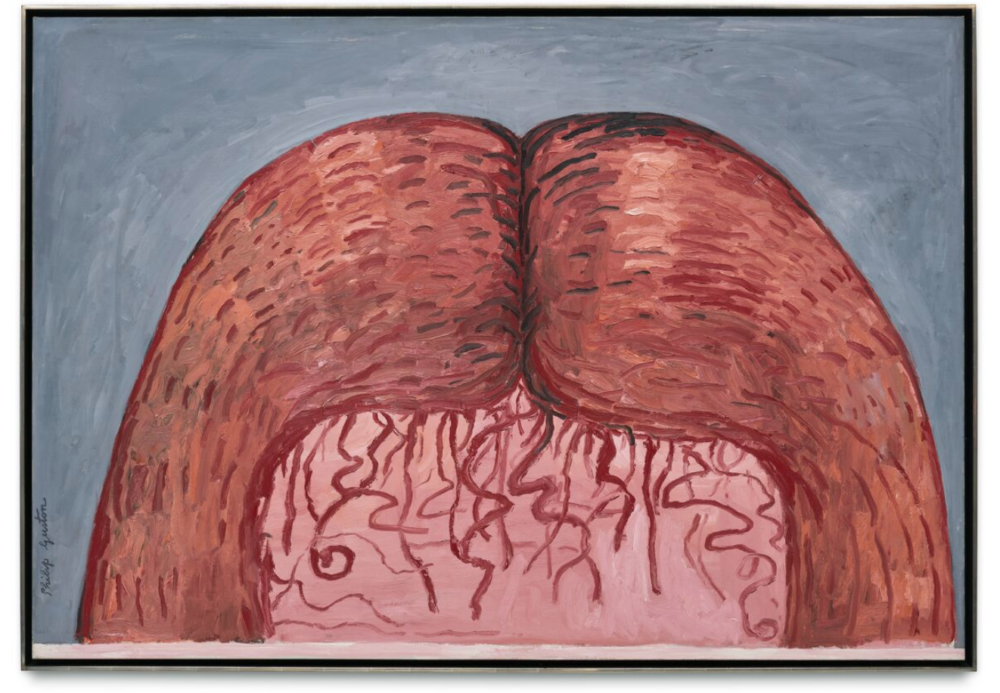If gazing upon the figurative paintings of Philip Guston is akin to a religious experience, then the exhibition “Transformation” at Hauser & Wirth represents a cornucopia of blessings. Spanning from the early sixties into the late 1970s, the show offers an intimate portrait of Guston’s process and includes more abstract early works that contextualize the later more complex figurative paintings. Works like the deceptively simple Untitled, an ink on paper drawing, give us a glimpse into the chunky, unsettlingly humorous, and often awkward shapes Guston began to explore in his later years. In this image, the two figures appear oddly disconnected, each rapt inside their own private consciousness; all we see are the backs of their heads, yet so much essential information is communicated without gesture or expression. The fat and lumbering nature of their bodies, unmoving in space and almost belligerent in their fixedness, gives us the sense that these two individuals will forever remain disengaged.

Phillip Guston, Musa, (1975). Oil on canvas, 41.25″ x 70.25.”
In another image, Musa (1975), the part in a woman’s hair becomes both a central division and a point of heightened tension like two rams butting heads, while below the hairline we see the wispy strands of hair that will not be contained. This image in particular showcases Guston’s signature palette of unsettling flesh tones and noxious pinks and browns. Again, we are denied the essential emotional connection because we cannot see the figure’s face, and are left to piece together a narrative with only the forehead and hairline to guide us. The result of this exclusion is that the figure then becomes a strange and luminous sort of landscape, the hairline like two adjoining hills. This kind of transformation happens again and again in Guston’s work, where the known becomes the unknown, and our own inherent curiosity to make sense of it all is amplified the more time we spend in his universe.
Finally, a strangely alluring poeticism suffuses Guston’s work, whether they be early paintings like Group II (1964) or the eerily beautiful The Poet from a decade later. Early or late, we are transfixed and completely engaged.


